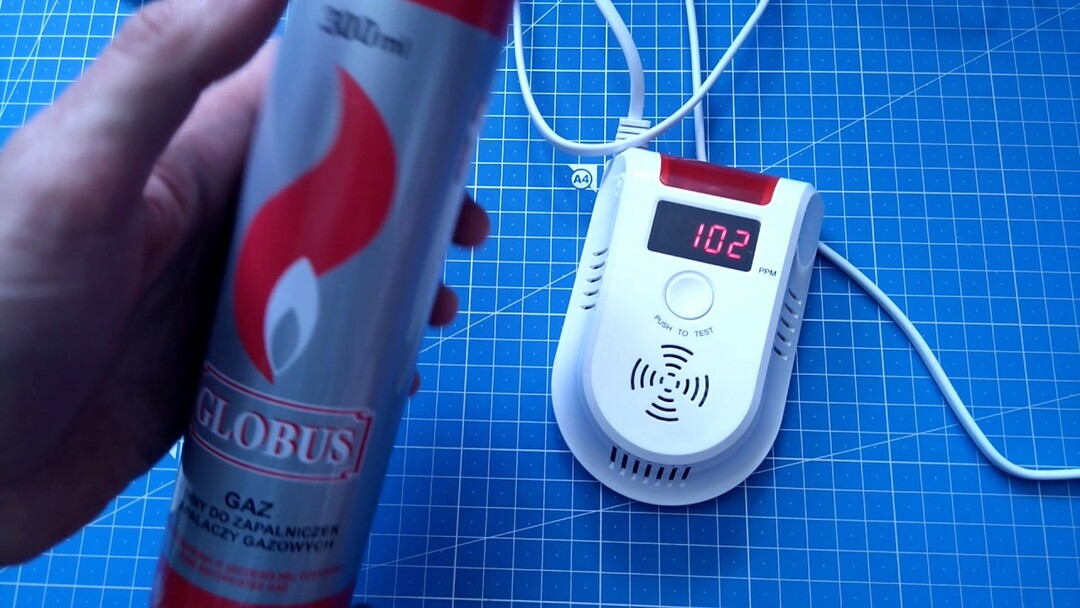Gas is present in many areas of life. The engines of vehicles work on it, they heat the premises, it is used as an energy carrier in various household and industrial devices. It would not be bad to find out what it consists of, what properties it has and what kind of dangers this universal type of fuel hides in itself, right?
We will talk about what kind of fuel is supplied to living quarters, consider the types of household gas and analyze what is included in its composition. We also recall the operating rules that everyone who uses gas equipment in everyday life needs to know.
The content of the article:
-
What gas is supplied to residential buildings?
- Varieties of household gas
- Composition and pressure of gas in pipelines
- Causes of the specific smell of gas
- Why is household gas dangerous?
- What does the color of the flame on the burners indicate?
-
Recommendations for the safe use of gas
- Rules for the operation of gas equipment
- Leak detection methods
- Conclusions and useful video on the topic
What gas is supplied to residential buildings?
Household gas is the most important raw material required for heating water, cooking and organizing a heating system in everyday life. It is a mixture of flammable gaseous substances and some additional substances.
Varieties of household gas
Compared to other energy sources, gas has many advantages: it ignites quickly, does not emit soot and smoke during combustion, practically does not contain harmful components and solid impurities. The combustion process of blue fuel is easy to control.
There are two main types of gas used in the home:
- Natural. A gaseous substance that is pumped into storage facilities and enters residential buildings through an extensive pipeline system. It consists mainly of methane and does not change its physical condition from the moment of extraction to delivery to the direct consumer.
- Liquefied. Propane-butane mixture obtained in the process of oil refining. It is a liquid placed in special tanks for storage or transportation to places where the use of pipes is impossible or economically impractical.
Through centralized heating and gas supply systems, natural gas is supplied to the living quarters, extracted from the bowels of the earth and previously purified from a number of impurities. This type of fuel is considered to be the cheapest, available and most convenient for apartment buildings.

Natural gas brings comfort and warmth to the house, allows you to heat the room with high quality, and quickly cook food. It is a versatile energy source that emits a large amount of heat during combustion.
And here liquefied propane-butane mixture a high heat of combustion is characteristic, but at the same time it is much more explosive. Liquid gas cylinders need to be properly transported, adjusted and connected. When operating them, it is extremely important to observe special safety measures. Often, cylinders or gas tanks are installed in private houses, in summer cottages.
Since methane is half the weight of air, it accumulates at the top when it leaks. The propane-butane mixture, on the contrary, goes down. This must be taken into account in emergency situations.
Composition and pressure of gas in pipelines
Before ending up in main pipelinesleading to residential buildings, natural gas is pre-processed and several degrees of purification. During the procedures, the necessary impurities are added to the fuel, making the composition as effective and safe for use as possible.
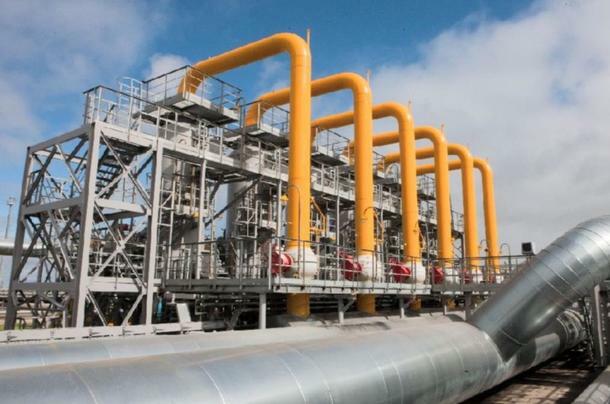
Following from the production site to heating systems and kitchen stoves, gas travels tens of thousands of kilometers along underground, underwater, surface or flood highways. From the point of view of the complexity of the device, they are single- and multi-stage.
The main proportion of the fuel mixture is methane. Depending on the region of production, its content varies from 80 to 98% of the total volume. It is the amount of methane that serves as an indicator of the quality of the energy carrier.
Household gas also contains:
- carbon dioxide;
- propane;
- ethane;
- butane;
- hydrogen sulfide;
- helium.
In addition, the fuel may contain a small amount of water vapor and nitrogen. Properties and characteristics are almost completely determined by methane, but can change under the influence of the quantitative and qualitative composition of the mixture.
In the systems of gas pipelines through which the fuel circulates, a very high pressure is created - above 2.5 MPa and up to 10 MPa. Under this pressure, gas travels over long distances and between settlements.
Since such an indicator is unacceptable for domestic consumption, when it enters gas distribution stations, it is significantly reduced by additional purification of methane. Thus, gas moves to consumers under pressure up to 5 kPa (low pressure), from 5 kPa to 0.3 MPa (medium pressure range) and 0.3 MPa to 1.2 MPa (high pressure range). We considered the pressure standards in the gas pipeline in more detail in following material.
Causes of the specific smell of gas
By itself, in its pure form, methane does not have a characteristic odor and color. What is added to household gas so that it smells characteristic? It is possible to detect a leak using the sense of smell due to the fact that a small amount of substances with a pungent unpleasant odor are mixed into the gas.
These substances are called odorants. They give the fuel mixture a specific smell of rotten hay, rotten eggs or rotten cabbage, which warns of danger and possible gas leak in the room.
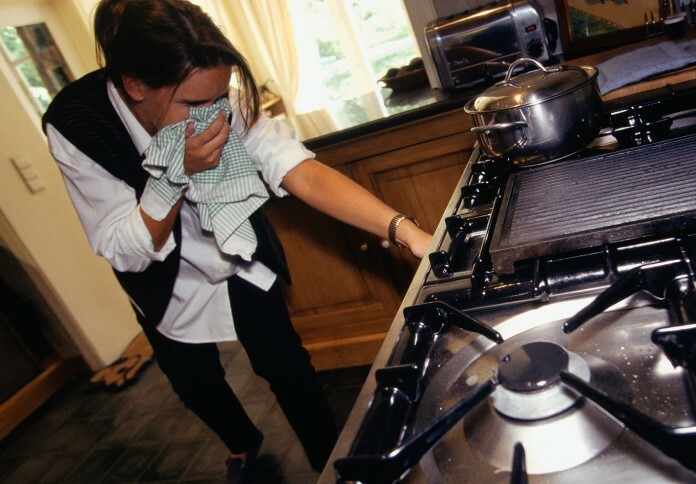
Odorants do not make the gas more toxic. In small concentrations, these substances are not hazardous to health, evaporate easily and are of a warning nature. If concentration limits are exceeded, substances can cause headache, nausea.
Sulfur-containing organic compounds are used as odorants, most often - ethyl mercaptan or ethanethiol. They are sprayed into the structure of the fuel mixture using special installations during processing.
Why is household gas dangerous?
Whatever gas enters residential buildings, through a main gas pipeline or from a cylinder, if mistreated, it happens deadly.
We recommend that you read the article: [link_webnavoz]Why gas cylinders explode: the main causes of accidents[/ link_webnavoz].
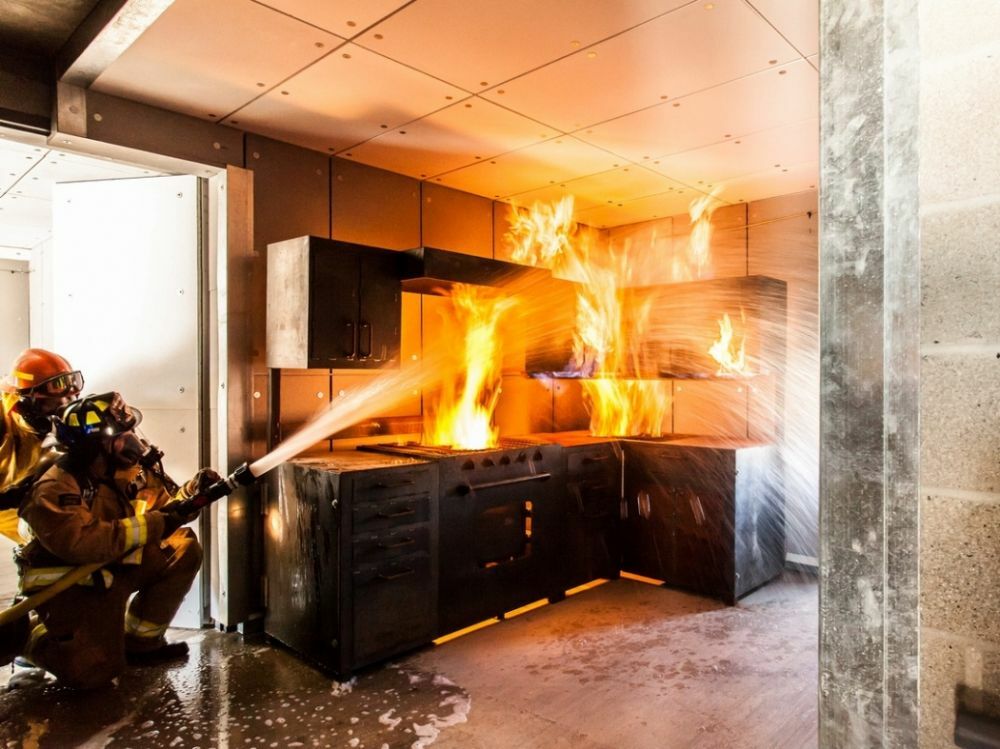
Explosive situations arise at the time of critical increases in methane concentration (more than 15% of the total volume of air in the room). Spontaneous combustion possible at temperatures above 650 ° C
Natural gas supplied to homes contains almost no toxic substances. But in everyday life, there are many cases when, as a result of a leak, serious harm to the body is caused or even death occurs. The main reason for this is carbon dioxidethat enters the room and displaces oxygen from the surrounding area, causing suffocation.
Another negative feature of methane is high fire and explosiveness. The level of risk is determined by many additional factors, in particular - pressure and ambient temperature.
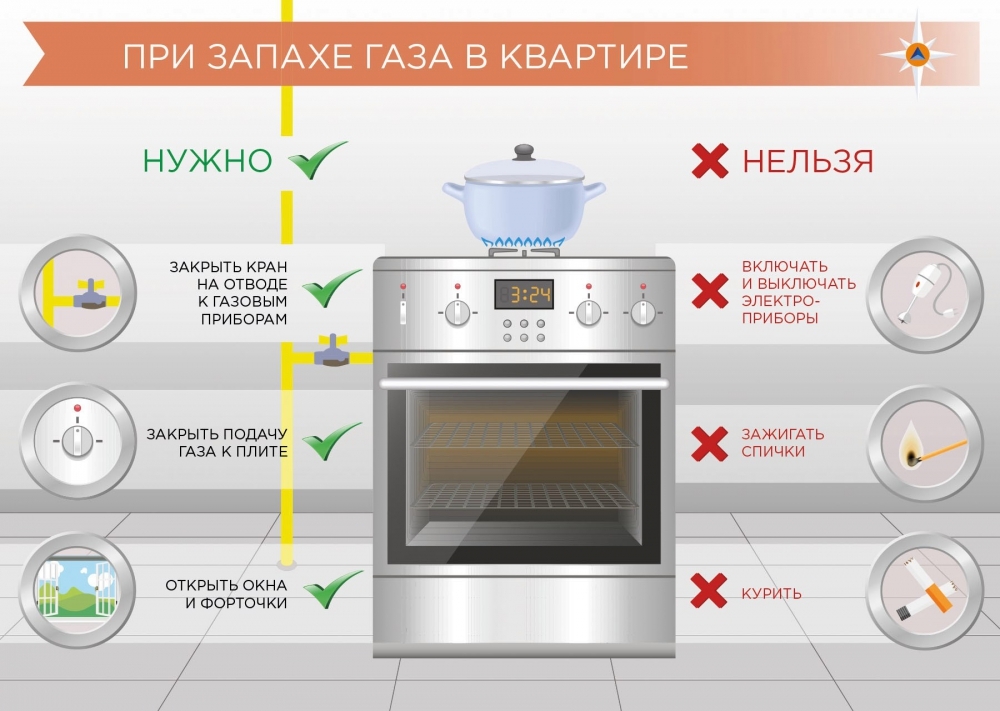
In the event of a leak, the gas mixes with air to form an explosive mixture. A source of ignition in entrances, apartments and houses can be a minor spark, flame from a cigarette, lighter, matches, any device that uses electrical impulses
Electrical equipment, devices powered by accumulators and batteries are especially dangerous in closed, gas-polluted rooms. With a high percentage of methane, even a switched on mobile phone and laptop can provoke an explosion or fire.
Explosions are so strong that they almost completely destroy housing. Therefore, having heard the characteristic smell in the apartment, it is advisable not to use electrical appliances and turn off the electricity in the control room..
What does the color of the flame on the burners indicate?
Flames on a gas stove or in a boiler often have different hues. The color depends on the quality of the gas supplied to the apartments. It is used to judge the physicochemical characteristics of the fuel mixture.
High-quality fuel with a homogeneous structure is characterized by uniform burning, rich in blue fire. Such gas completely burns out, while releasing the maximum amount of heat and a minimum of harmful substances.
The purity of combustion is affected by the hydrogen content. If tongues appear in the flame red, orange or yellow color, this indicates a problem.
There can be two reasons:
- Imbalance in the air-fuel mixture.
- Poor quality of the energy carrier.
Abnormal color of the flame in the burner indicates the presence of unwanted impurities, incomplete combustion of fuel and the formation of carbon monoxide. Therefore, both cases are potentially dangerous.
An imbalance in the fuel mixture can occur due to insufficient or excessive air flow, clogging of the burner with soot, dust, soot. It happens that gas is supplied to the house low densityunable to provide an optimal heating level.
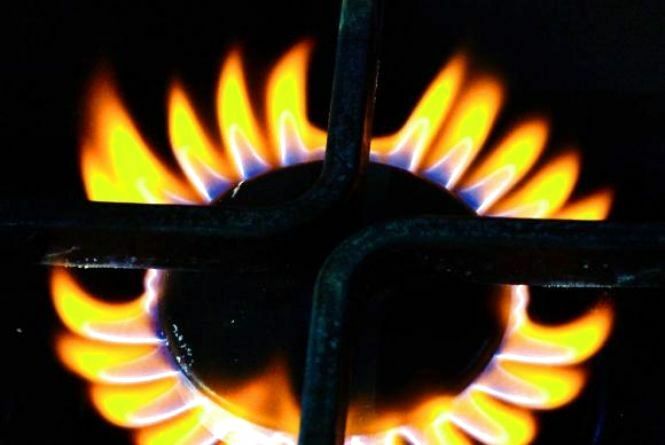
If you find an abnormal shade of flame in the burner, contact the gas company or the responsible authority. Low-quality fuel is dangerous to use, leads to increased costs, premature wear of gas equipment and various emergencies
In this situation, for the normal operation of the system, large volumes of resources are required, and, consequently, utility bills are growing. Typically, the culprit is asset management companies that increase their revenues by deliberately reducing the hydrocarbon and carbon dioxide content of the energy carrier.
Recommendations for the safe use of gas
In practice, most of the explosions and fires are caused by the human factor, neglect of safety measures when using gas, and negligence in handling gas equipment.
To protect yourself and your loved ones, you need to follow a number of norms and generally established rules. This will help prevent explosive situations and all adverse consequences associated with gas leaks.
Rules for the operation of gas equipment
Any gas equipment should be purchased only from specialized companies that can present certificates for the sale of this type of product. It is necessary to pay attention to the instruction for the safe operation of the device in the kit.
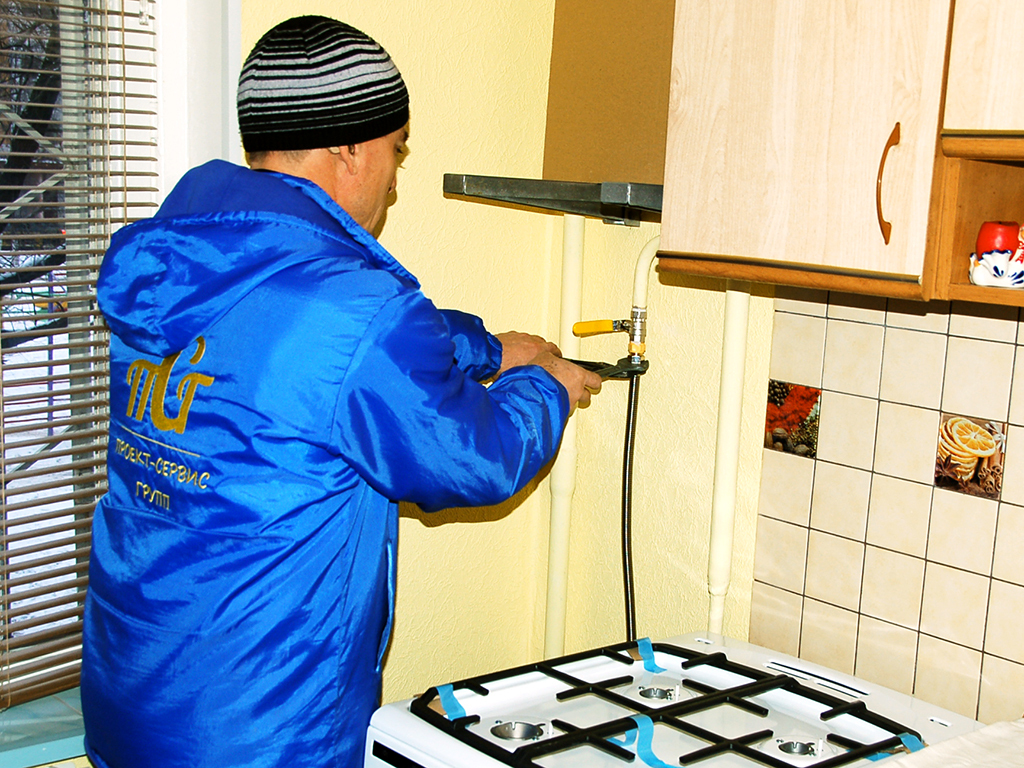
Installation and repair work must be carried out by specialists of the relevant organizations. Unauthorized gasification of a house or apartment, replacement, reinstallation and changes in the design of gas appliances are strictly prohibited
It is important to adhere to the following rules for operating gas equipment:
- carefully read the instructions and follow the recommendations specified in it;
- do not use the equipment for other purposes (warm up the apartment with a gas stove);
- monitor the performance of devices and ventilation, annually invite specialists to check the draft;
- ensure a normal air flow in the room, do not insulate ventilation openings, do not obstruct gas pipes;
- do not leave functioning devices unattended, especially in rooms with young children, and also if the devices are not designed for continuous operation and are not equipped with appropriate automation;
- do not tie clotheslines to gas pipelines;
- turn off gas valves and taps on the pipeline before leaving the house; in case of a long absence, it is better to turn off the electricity;
- Do not blow out or flood the flame on the burner with water or other liquids.
It is very important to regularly check the condition and tightness of hoses, fittings, and threaded connections. The optimal length of the flexible hose is no more than 2 meters, the maximum service life is up to 4 years.
The hose should be tightly fitted over the gas cock, but it is not recommended to overtighten the clamping strap.
We reviewed more recommendations for the safe operation of gas equipment in this article.

Most often, gas leaks occur due to ruptures of the hoses connecting the plate to the gas pipeline, violation of sealing in the area of threaded seams. Another common reason is the carelessness of users who forget to close the valves responsible for the gas supply.
Feeling characteristic the smell of gas in the apartment, it is necessary to immediately shut off the burner cocks and valves on the pipeline. You should also open doors, windows and thoroughly ventilate the gas-polluted room, making sure that all those present quickly leave it.
People who have been affected by the gas must be urgently taken out to fresh air and given first aid:
- lay on your back so that your legs are higher than the body;
- remove tight clothing;
- cover, rub the chest, bring ammonia;
- turn on the side when vomiting;
- drink plenty of water if possible.
Do not do anything that can create a spark or flame: smoke, light a fire, turn on / off electrical appliances, lighting, press the call button, use mobile devices.
It is advisable to immediately report the incident to the emergency gas service. While the rescuers arrive, it is worth warning the neighbors about the situation.
Leak detection methods
Several proven methods are used to detect gas leaks in a room. The easiest and most common option is to conduct surface inspectionby applying soapy water along the gas pipes. In case of leakage in problem areas bubbles form.
The surest way to get out of trouble is to install carbon monoxide sensor.
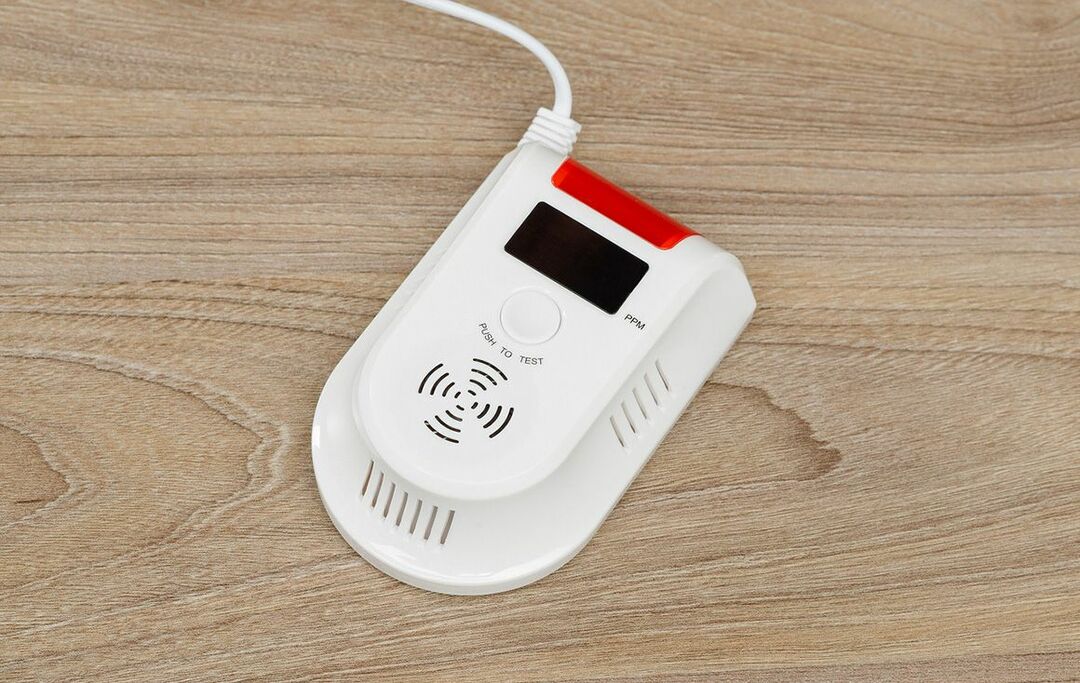
This state-of-the-art ultra-sensitive device - a gas leak detector - will instantly alert you to the slightest problem by means of sound or light alarms.
In addition, a leak can be detected by ear or smell. With a strong leak, the fuel mixture escapes from the pipes with a whistle. It's not hard to feel and specific odor of odorantsadded to the fuel structure during processing.
Conclusions and useful video on the topic
What path does natural gas travel from the moment of production to delivery to the end consumer:
Recommendations for the safe operation of gas appliances:
Natural gas supplied to apartments via trunk pipelines is one of the most affordable and profitable types of fuel. It has a high calorific value and does not contain harmful impurities that pollute the surrounding space.
At the same time, gas is a source of increased danger and requires careful handling in everyday life. To prevent fire, explosive situations and poisoning from leaks, certain safety precautions must be followed when using gas equipment.
Timely maintenance of gas equipment, ensuring high-quality ventilation, control over operation of equipment and competent actions at the time of an emergency - these are the basic rules for safe use gas.
Do you have any questions about the types of domestic gas? Or would you like to supplement this publication with useful information? Write your comments, ask questions to our experts and other users - the feedback form is located below.


